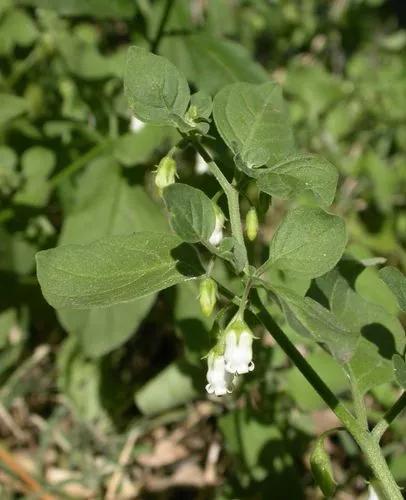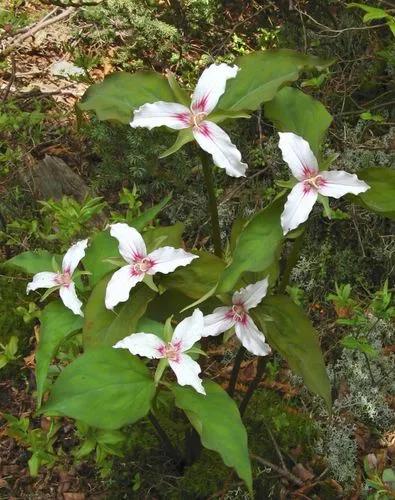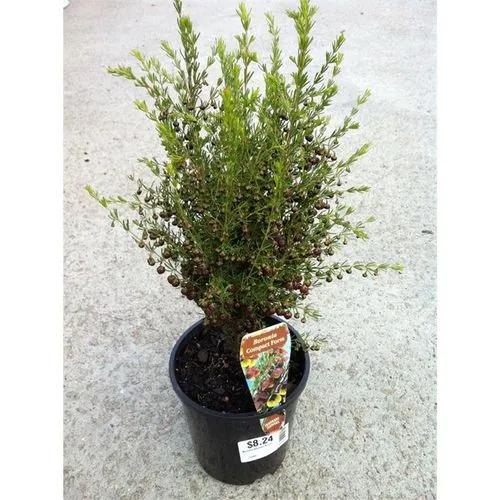Mayapple is a perennial wildflower that is much more common in native woodland areas than in cultivated gardens. Wildflower identification can be challenging, but mayapple is one wild plant that's quite easy to identify. Nothing else looks even remotely like it. Moreover, as a perennial that spreads via rhizomes to form large colonies, you're most likely to encounter it in a mass formation that's hard to miss. Once you see a photo of its leaves, you'll never forget how to identify it. Growing 12 to 18 inches tall, each plant has a single stem with one or two large, heavily divided umbrella-like leaves. Plants with two leaves may produce a large white flower with 6 to 8 petals in early spring, though the flower is usually hidden beneath the leaves. The flowers give way to a single greenish fruit that turns golden when ripe, and which can be used in preserves and jellies.As a shade-tolerant plant, mayapple is a natural for woodland gardens. If you live in eastern North America, consider mayapple for your native-plant garden. If you live elsewhere in its hardiness range and wish to grow it, take comfort in the fact that this plant is known to naturalize easily. In fact, if the conditions are right, mayapple might naturalize a bit too freely and spread out of control.
Mayapple Care
Podophyllum Peltatum



How to Care for the Plant

Water

Mayapple prefers relatively moist soil, but like many woodland wildflowers, it has good tolerance for dry conditions, provided it is in a shady location. A good amount of organic material in the soil generally helps provide necessary moisture retention.

Fertilizer

No feeding is necessary for mayapple, as this wildflower generally derives all the nutrients it needs from organic material in the soil. In poor soils, amending with compost will help the plants.

Sunlight

At the southern end of mayapple's range, a location with full shade is best. In the North, however, they can take some sun, especially if they receive sufficient moisture.

Soil

Mayapple plants prefer a well-drained soil that tends toward the acidic side of the pH scale. It will do in either moist or dry soil, provided it is humusy and well-drained.

Temperature

Mayapple does well in temperature and humidity levels throughout its hardiness range, though you should expect it to die back by mid-summer.

Additional

On the one hand, the "apple" of this plant is edible. On the other hand, you may have heard that mayapple is a poisonous plants. Both points are true.Be careful to eat only the fully ripened fruit. While the ripe, golden fruit is delicious, but if you eat the fruit while it is still green, you might become ill with gastrointestinal symptoms.Other parts beyond the fruit are quite toxic and should not be eaten. The rhizome, foliage, and roots contains podophyllotoxin, which, when ingested in large amounts, can cause neurological disorders, liver problems, and bone marrow dysfunction. Poisoning in humans usually occurs when herbal-medicine enthusiasts mistake the plant for European mandrake (Mandragora officiinarum).

Popularity

588 people already have this plant 137 people have added this plant to their wishlists
Discover more plants with the list below
Popular articles






